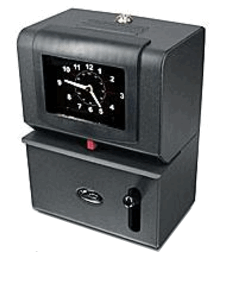
They uphold a worker-employer divide and one-way power flow which can cripple company culture. They’re often highly inflexible and unable to deal with inconsistencies like forgetting your key card, punching in early or forgetting to clock in.īy placing the responsibility of providing accurate data on the shoulders of the employee, time clocks also create a tense workplace dynamic.
#Employee time clock manual
Time clocks are completely dependent on manual input, and thus extremely vulnerable to human error.

More modern varieties have used magnetic stripe cards, RFID tags, remote mobile devices and even biometrics to work, but the reliance on manual action remains. First introduced back in the 1880s, they usually depend on some form of manual input to document employee time – either in the form of a card that gets “punched” with holes or timestamped. Time clocks record people’s working hours by showing when they arrive and leave work. Here's why the best employee time clock currently available isn't a time clock. Our work models have changed, our workplaces have become increasingly disparate and virtual, and our patience for managing menial admin has reached its limit.


While businesses have been using time clocks to do the job since the late 1800s, they have aged terribly. Love it or hate it, you can’t invoice accurately, improve profitability or manage resources effectively without time tracking.


 0 kommentar(er)
0 kommentar(er)
